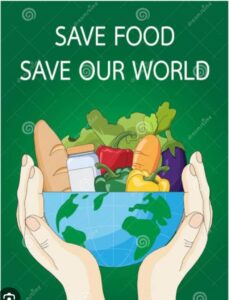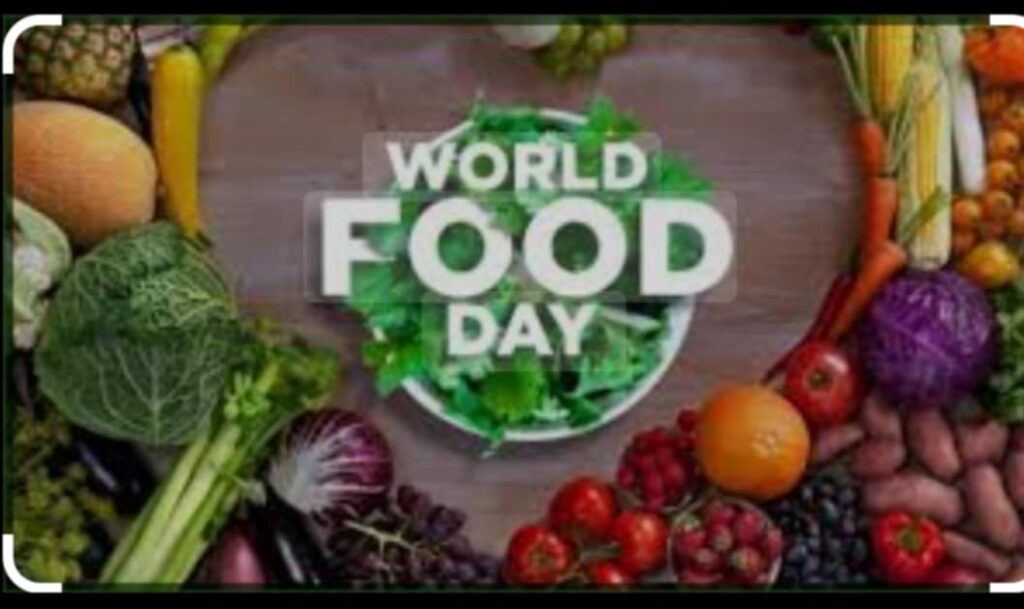Introduction:
World Food Day is being observed every year on October 16 as a tribute to the Food and Agriculture Organization (FAO) of the United Nations that was created in the year 1945. A day has been selected with the aim of highlighting the critical issues of hunger, malnutrition, and food insecurity and furthering the requirements of sound agricultural practice in the world. With increasing population, population growth goes hand in hand with pressure on food security also.
According to the FAO, food production must increase by 70% to feed the 9.7 billion projected in 2050. Considering that issues and successes related to World Food Day deal with problems of hunger and assure access to nutritious food for everyone, it calls for global cooperation by the nations of the world.
The Global Hunger Crisis.

There is still a lot of hunger, even though agriculture and food production have greatly improved. According to the Food and Agriculture Organization’s State of Food Security and Nutrition in the World report, nearly 735 million people experienced hunger in 2023. The trend is disturbing because it shows an increase from 613 million in 2014 to 735 million in 2023. Among the key drivers that have escalated this crisis include the COVID-19 pandemic, climate change, and conflicts, pushing more people into food insecurity. FAO estimates that another 2 billion will be added to the world’s population by the year 2050, which will exert further pressure on food systems. Increased urgency needs to be exerted to combat hunger and malnutrition in a far more urgent manner, especially in food-insecure regions such as Sub-Saharan Africa and South Asia.
Malnutrition and Its Horrible Effects
Cases of obesity, undernutrition, and malnutrition have become significant global public health concerns. According to estimated statistics, roughly 148.1 million children are stunted, or too small for their age, as of 2023. At the same time, there are approximately 45 million suffering from wasting, or being too thin for their height. However, childhood overweight and obesity have increasingly become normal, involving more than 38.3 million children below five years of age. This number indicates that under the double burden of malnutrition due to unbalanced diets and food systems, malnutrition seriously affects the double burden on populations, both undernourishment and overnutrition. Malnutrition has implications for physical health as well as cognitive development and economic productivity. Estimates put malnutrition’s costs at $3.5 trillion per year in health care and lost productivity around the world. Access to adequate nutrition will therefore be critical to poverty-cyclical entrapping versus better economic development.
Agriculture and Climate Change:

Probably one of the sectors most vulnerable to climate change, agriculture is already feeling the wrath of extreme climate change-related weather events, like heat waves and drought, impacting agriculture yields and thus food production. Between 2008 and 2018, natural disasters inflicted at least $1.5 trillion in damages on the agriculture of developing countries, causing significant heavy losses in agricultural livestock as well as fisheries productivity, reports FAO. In response to these challenges, there is growing demand for sustainable agriculture: investing in climate-resilient crops, improving water management, reducing food waste, among others. FAO estimates that around 14% of the world’s food goes to waste between harvest and retail, while another 17% is wasted by the consumer. The primary approach to increasing food availability without increasing agricultural production is through the reduction of food loss and waste.
Role of Sustainable Agriculture
Sustaining agriculture is the needed key to attaining food security in the world. Not only does it comprise guaranteed agricultural practices that maintain the economic soundness of farmers, preserve biodiversity, promote environmental safety, and save resources, but it also fosters healthy soil, retains more water, and cuts down greenhouse gas emissions. According to the FAO, sustainable farming could increase food production by 58 percent by 2050 and mitigate the effects of climate change.

Conclusion
World Food Day brings us the mirror image of a world where hunger continues and urgent solutions remain to be met. Indeed, with close to 735 million people still suffering from hunger and malnutrition, now more than ever is such a crucial call for global action. We can improve food systems to be resilient, inclusive, and sustainable at a time when ensuring that all have nutritious food while protecting our planet for future generations is crucial.



